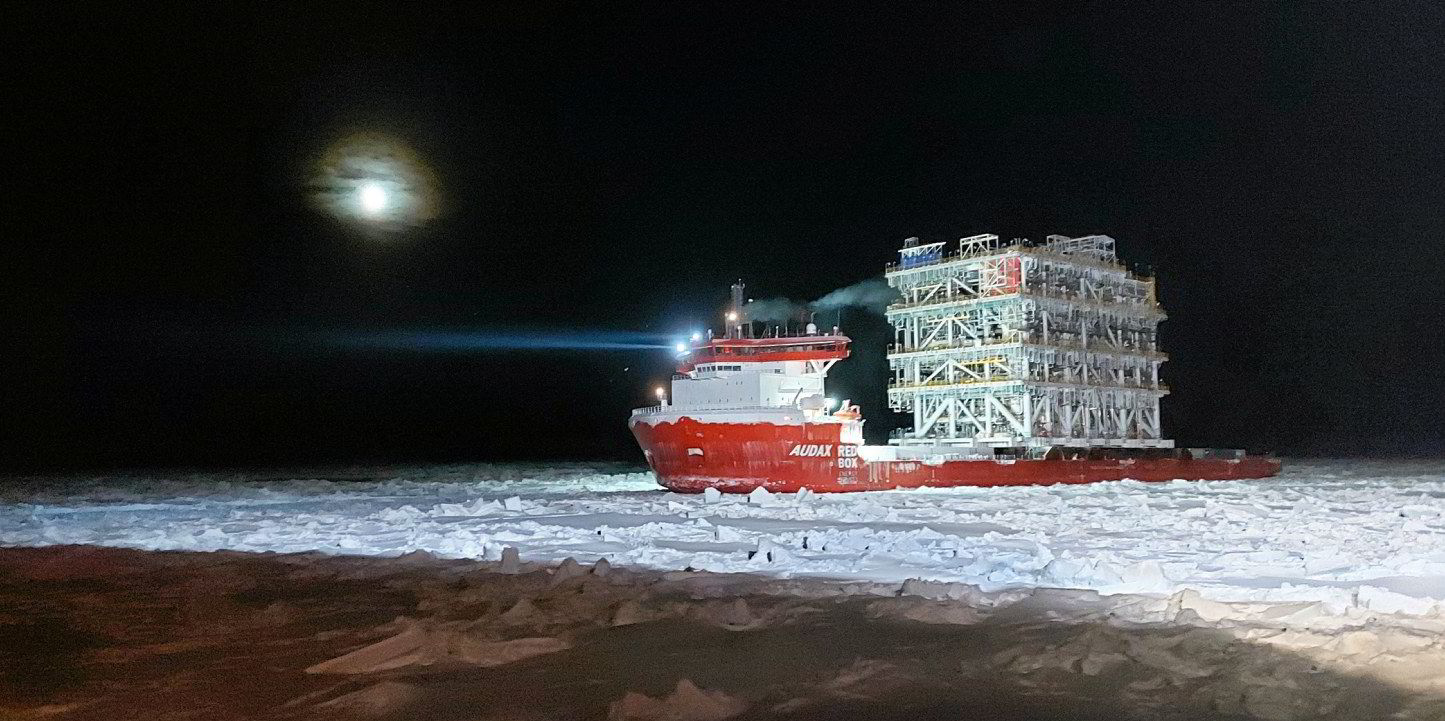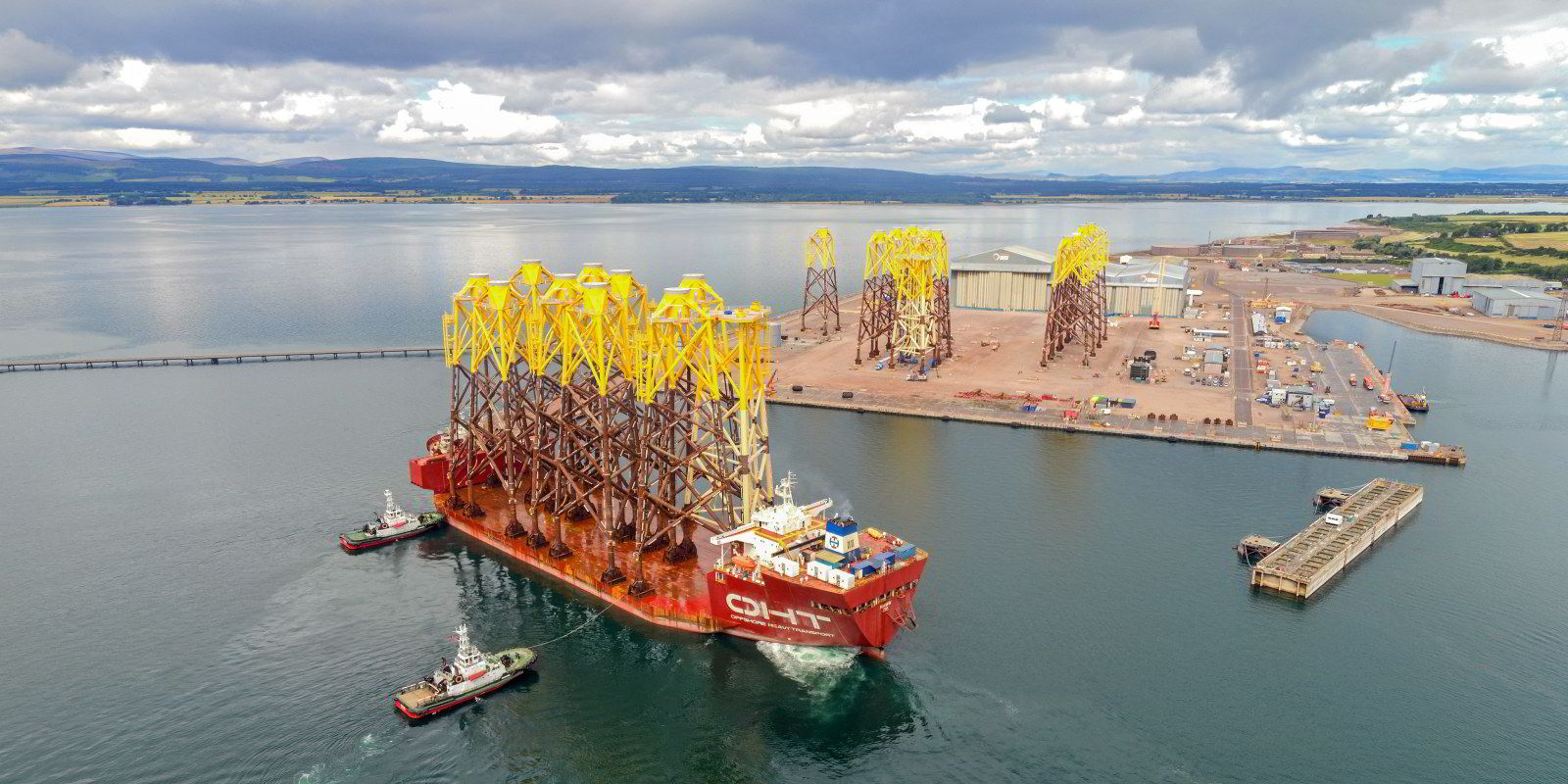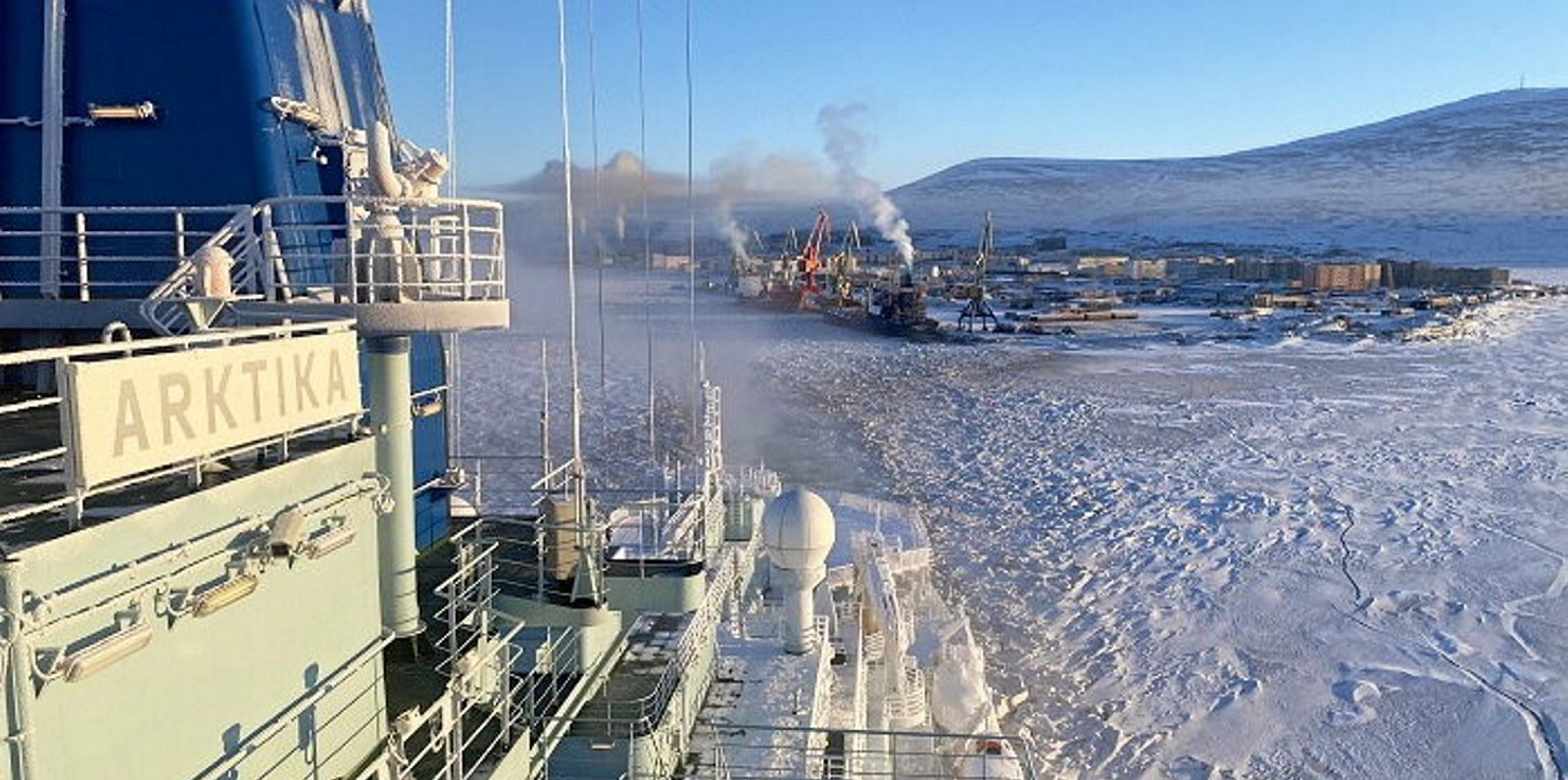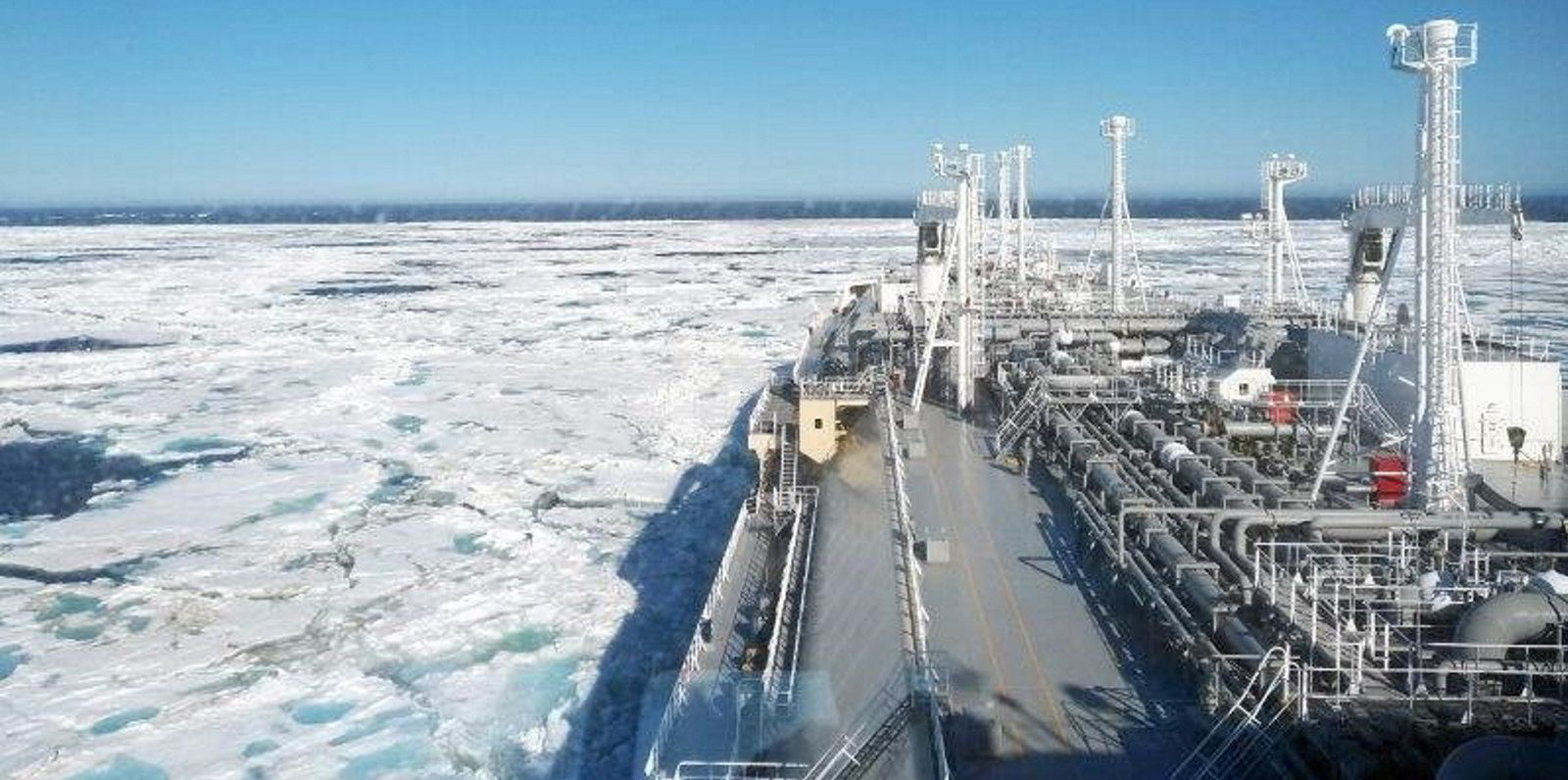Arctic winter transits by ultra-high ice-class merchant vessels are about to become standard practice following a successful voyage in the worst ice conditions for years.
So believes specialist project cargo shipowner Red Box Energy Services, owner of the ice-breaking heavylift cargo ships 24,500-dwt Pugnax and Audax (both built 2016).
The sisterships are among many carrying LNG process modules for Russian gas producer Novatek’s Arctic LNG 2 project, under time charter for their supplier TechnipFMC.
But Red Box boasts that its ships are the only ones that can carry such payloads through an Arctic winter.
The ultra-high ice-class deck cargo sisterships recently delivered one 11,000-tonne module each after a first-ever east-west winter transit of Russia’s Northern Sea Route (NSR), with loading at Tianjin, China, and discharge at Murmansk.
Novatek said in an announcement: “The successful completion of the voyage testifies to the reliability of the company’s logistics model and the possibility of year-round LNG deliveries via the Northern Sea Route to the Asia Pacific region.”
But Red Box chief executive Philip Adkins told TradeWinds that Novatek’s attitude towards the transit was less bold than its press release.
“Success has many fathers,” said Adkins.
The go-ahead for the voyage came only after a stand-off between Technip, which favoured the untried east-west winter voyage despite this year’s extreme ice conditions, and Novatek, which found it too risky.
The Pugnax and Audax carried, respectively, modules 11 and 15 of a 15-unit liquefaction train to be installed on a gravity-based structure (GBS), the first of three.
The GBS — concrete islands of 500 metres by 200 metres — are to be assembled in Murmansk, then towed to the Gydan peninsula in Russia’s far north and sunk into the shore at the site of Arctic LNG 2 and secured with pilings.
The Audax module was to be the last installed on the GBS at Murmansk, and Technip was behind schedule at Tianjin.
That could have delayed the first train of Arctic LNG 2 meeting its summer 2022 start-up window.
“It was a question of making up for construction delays through logistics,” Adkins said.
“The modules have to be loaded onto the GBS sequentially, starting in March. The GBS island then has to be finished in July, and then it takes several weeks to tow it into place. So we had two critical pieces of the puzzle that had to get to Murmansk by mid-February, but the Audax module was not ready to go from Tianjin until September.
“Technip was willing to go with the NSR in winter to buy fabrication time. Technip told Novatek, ‘If we do not do this, we will not be able to meet your schedule’. And it was extremely risky, nevertheless we safely executed the transit.”
Entering the Bering Strait in the unusually severe winter, the ships met ice beyond what they had seen before.
“The ice conditions we encountered were well beyond the seasonal norms and the extreme ice pressure along the route was exacerbated by 40-knot headwinds in the Bering Strait and Chukchi Sea,” Adkins said. Referring specifically to the Audax, he said the voyage “tested the vessel and its crew to the max”.
In some stretches, the ships would average only one knot over a period of 10 hours, in others 14 knots.
In the most challenging parts of the passage, the Audax required the help of two Rosatomflot nuclear-powered ice breakers to cut a path wide enough, the 20,646-gt Yamal (built 1992) and 28,494-gt Arktika (built 2020).
“Even the Russians learnt a lot,” he said, referring to the Rosatomflot escort forces. “The northerly winds through the Bering Strait created ice ridges of up to 6 metres high, so getting past go was no easy feat.”
One commercial source said Technip is paying a daily time charter rate of something like $100,000 per day — about twice as much as similarly sized heavylift vessels earned serving Yamal by the Suez route.
Adkins would not comment on the rate, citing confidentiality clauses, but said his ships remain on time charter to Technip as they slow-steam back to China to pick up their next modules.
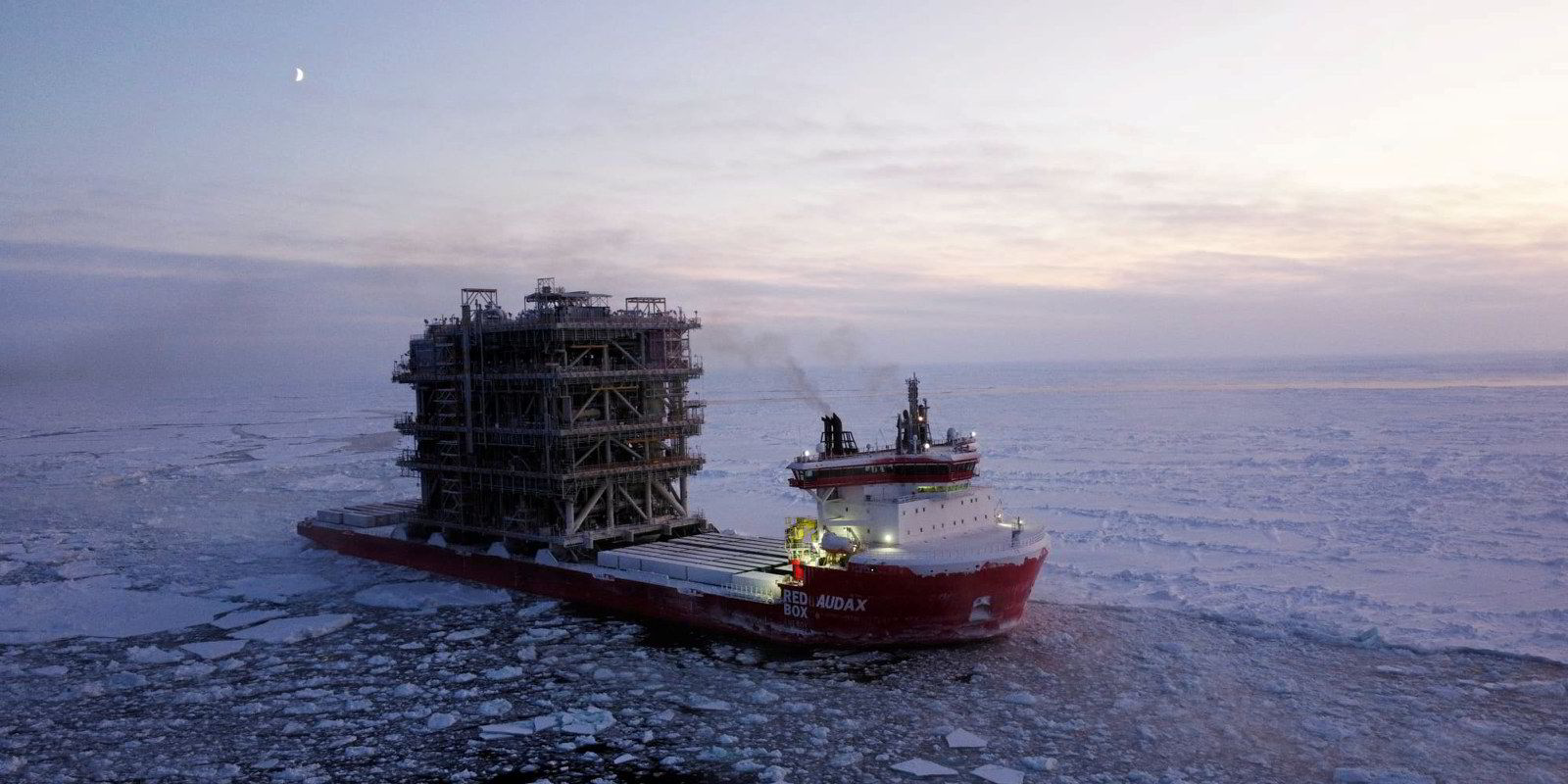
“We never do anything on a voyage-charter basis,” he said.
The Pugnax and Audax will carry two more modules for Arctic LNG 2 in the easier summer months before taking on an ice-free delivery to LNG Canada at Kitimat in British Columbia later in the year.
